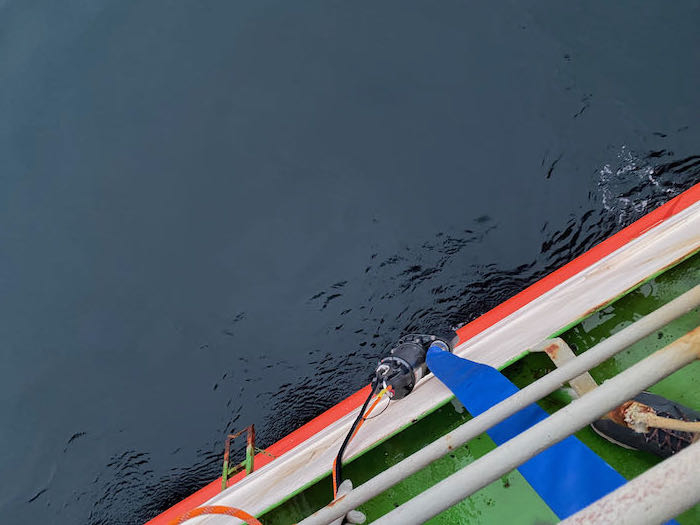In 1911, scientist Marie Curie won the 2nd of her Nobel prizes (her first was for developing the theory of radioactivity) for her work in discovering the radioactive elements polonium and radium.
A little chemistry primer/refresher: Elements are pure substances made of only one kind of atom - oxygen and carbon are elements. No matter how much you break them down, their properties remain the same. They have standard electrical charges and mass (weight). An isotope is a form of an element that may "weigh" more or less than the standard. Carbon traditionally has a mass of 12, but one of its isotopes (used to determine the age of fossils) has a mass of 14. Thus, you can have "normal" carbon and "heavy" carbon, and the different isotopes can be used for scientific analysis. Radioactivity is what happens when unstable isotopes break down and give off different types of energy.
On our expedition, several members of the science teams are collecting water samples and analyzing them for different isotopes, and radium is the main focus for one group in particular. Radium primarily comes from the land and from the continental shelf, so scientists expect to find decreasing amounts of radium far from the coast. When radium is present in high amounts in the ocean it indicates that the chemistry of the water has been changed through contact with the continental shelf.
Dr. Lauren Kipp from Rowan University in NJ and Adele Anderson from the Woods Hole Oceanographic Institute (WHOI) in MA are collecting surface water samples to analyze for this element. The isotopes they are investigating are long-lived, one with a half-life (the time it takes 1/2 of an amount of a substance to decay) of 5.75 years and another with a half-life of 1600 years. Radium is an excellent tracer chemical because it is stable except for radioactive decay (which happens at a known rate), can easily be measured from the water samples, and is not affected by any biological organisms in the water.
 Scientists Adele Anderson and Lauren Kipp test for radium over the side of the ship.
Scientists Adele Anderson and Lauren Kipp test for radium over the side of the ship.
To collect the samples, the team needs a larger volume of water than can be used from the Niskin bottles on the rosette - 130 liters (an industrial size garbage can full) for each analysis.
 Lauren Kipp collects 130 liters of seawater before filtering.
Lauren Kipp collects 130 liters of seawater before filtering.
Because of lab space and water access issues, they need to work from a shipping container above the helicopter deck.
 Shipping containers on the deck. Or, are they?
Shipping containers on the deck. Or, are they?
 No, it's actually a lab, complete with running water, electricity, and heat.
No, it's actually a lab, complete with running water, electricity, and heat.
They lower a pump and a 50 foot hose off the deck into the water to begin collection.
 Lowering the pump over the edge of the ship 50 feet into the water - it's a little scary to look down.
Lowering the pump over the edge of the ship 50 feet into the water - it's a little scary to look down.
Once the water is collected, it gets pumped back out of the garbage can through a filter that contains highly "brushed out" - using a wire pet brush - manganese fibers. The managenese collects the radium, and then the fibers can be taken back to the lab for analysis.
 Manganese fibers that will trap the radium from the seawater.
Manganese fibers that will trap the radium from the seawater.
Prior expeditions have shown that there were increased levels of radium in the Arctic near the North Pole (not near land at all). This is a location where a strong surface current carries water from the continental shelf into the open ocean, so they hypothesize that this increase is due to changes occurring over the shelf and close to land, such as loss of sea ice, higher wave/coastline interaction, and increased river discharge - all a result of climate change. Future studies hope to document the trend and attempt to understand the long-term effects.


Comments
Add new comment